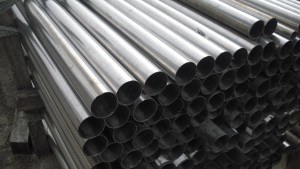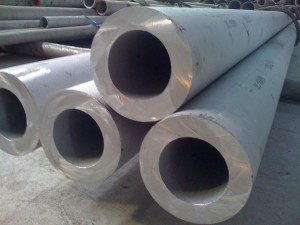Carbon steel, also known as carbon steel, refers to iron and carbon alloys containing less than 2% carbon, carbon steel in addition to carbon generally contains a small amount of silicon, manganese, sulfur and phosphorus.
Stainless steel, also known as stainless acid-resistant steel, refers to the resistance of air, steam, water and other weak corrosive media and acids, alkalis, salts and other chemical impregnating media corrosion steel. In practice, the steel that is resistant to weak corrosive media is often called stainless steel, and the steel that is resistant to chemical media corrosion is called acid-resistant steel.

(1) Corrosion and abrasion resistance
Stainless steel is an alloy that is resistant to corrosion by weakly corrosive media such as air, steam, water and chemically aggressive media such as acids, alkalis and salts. And this function is mainly attributed to the addition of the stainless element - chromium. When the chromium content is greater than 12%, the surface of stainless steel will form a layer of oxidized film, commonly known as passivation film, with this layer of oxidized film will not be easy to dissolve in certain media, plays a good isolation role, has a strong corrosion resistance.
Carbon steel refers to an iron-carbon alloy containing less than 2.11% carbon, also known as carbon steel, its hardness is much higher than stainless steel, but the weight is greater, the plasticity is lower, easy to rust.
(2) different compositions
Stainless steel is short for stainless acid-resistant steel, resistant to air, steam, water and other weak corrosive media or with stainless steel is called stainless steel; and will be resistant to chemical corrosive media (acids, alkalis, salts and other chemical impregnation) corrosion of the steel is called acid-resistant steel.
Carbon steel is an iron-carbon alloy with a carbon content of 0.0218% to 2.11%. Also called carbon steel. It also generally contains small amounts of silicon, manganese, sulfur, and phosphorus.
(3) Cost
Another important consideration is the cost difference between carbon steel and stainless steel. Although different steels have different costs, stainless steel is generally more expensive than carbon steel, largely due to the addition of various alloying elements, such as chromium, nickel, and manganese, to stainless steel.
Compared to carbon steel, stainless steel has a large number of other alloys mixed in and is more expensive compared to carbon steel. On the other hand, carbon steel mainly consists of relatively cheap elements of iron and carbon. If you are on a tight budget for your project, then carbon steel may be the best option.

Which is harder, steel or carbon steel?
Carbon steel is generally harder because it contains more carbon, though the downside is that it tends to rust.
Of course the exact hardness will depend on the grade, and you should note that it is not the higher the hardness that is better, as a harder material means that it is easier to break, whereas a lower hardness is more resilient and less likely to break.
Post time: Jul-22-2025






